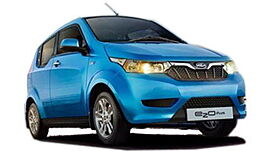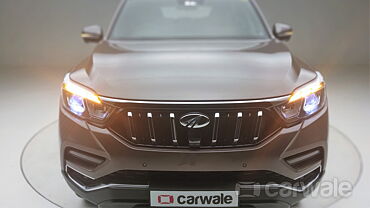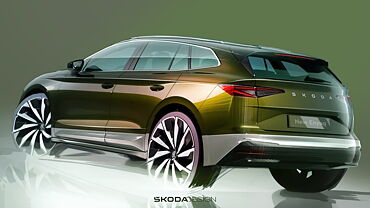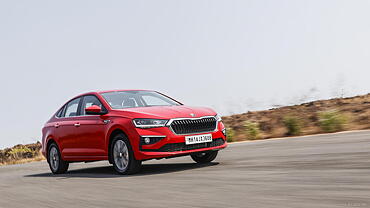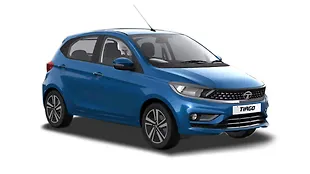
Mahindra held a press conference recently in Mumbai to disclose their intentions in the electric mobility space to cope with the Government’s electrification intent (Niti Aayog) by the year 2032.
Currently, Mahindra is the only manufacturer of electric four-wheelers and till date the company has already invested 600 crores on EVs, even though the sales isn’t anywhere close to promising. And that’s a given, considering the biggest hurdles for buyers like you and me is the range (currently hovers between 110-140km), availability of charging stations and the present swollen price tag.
Let’s talk about the range first. Currently Mahindra four wheelers have a 48V or 72V battery pack that’s good for a range of 110-140km. And the company knows that this range is not enough for buyers to be confident about not running out of charge while they are on an errand. For this, Mahindra has tied up with IIT Madras and is in the early stages of developing a high efficiency motor so that the range from the current 48V and 72V batteries can be increased to at least 200km. But if you ask us, a range of 200km in test conditions will turn out to be 170km in real world conditions. And it just isn’t enough because those who drive more on an average will have to go through the ordeal of fast charging too (which we’ve mentioned later). We believe that when the 380V tech rolls into our market (when it does, that is) with the 204bhp capability and up to 400km range, this could work with users as this is the average range our petrol/diesel cars shell out.

Now, Mahindra believes that normal buyers get influenced and tend to buy those vehicles that are already plying our roads. Case in point – fleet operators. Which is why they acted as a catalyst for companies like ‘Lithium’ to set up their fleet operations which consist of 250 vehicles in Bangalore and Delhi. However, what was key in that operation was that Mahindra was involved in the installation of 35 fast chargers in Bangalore and Delhi (average of seven cars per fast charger). But that won’t be the case for the general consumer, since only the Government or a charging infrastructure company can own the fast charging point. Mahindra believes that more than seven cars should be okay using one fast charger. But we believe otherwise, and let me break this up for you. We need to understand that consumers can transition to a new technology only when it seamlessly infuses with our current lifestyle. The present scenario does not require a petrol/diesel car user to spend an hour to fill fuel (waiting and filling combined). But sadly, this is the time it takes to fast-charge an EV currently, and even if this goes down to 45min through better tech, it is still an unreasonable amount of time.
Imagine you are waiting in line for somebody who has just plugged his car before you. Will you wait for 45min for that car to charge and then wait another 45min for yours? Also, there was a time when CNG queues were unreasonable but the situation only got better when the number of filling stations increased. On the same lines, EV usage will only increase when there are more charging stations that can juice your car in much lesser than 45min. Also, we need to understand that a fast charger costs roughly 4 lakh today, and the Government is currently speaking to fast charger manufacturers to work towards getting the cost down to around 1.2 lakhs each. At the moment nobody has come upfront to invest in the fast charging infrastructure, and it seems obvious that investors are put off by the fact that their assets will be lying along the road unused for quite some time, thanks to the almost non-existent EV population.
This brings us to another important factor: the price. Mahindra feels that the cost of EVs need to go down by roughly 20 percent for them to be affordable for buyers. And we don’t agree with this. For the price of an e2o plus that ranges from Rs 7.73 – Rs 11.56 lakh ex-showroom Mumbai, I don’t have to tell you what you can buy for that kind of money. Let’s reduce 20 percent from this equation and we get a revised Rs 6.20 – Rs 9.20 lakh. For what the e2o plus offers, would you still buy it? I thought so. Mahindra and other upcoming EV makers will need to work on their products and make them on par with their petrol/diesel contenders since mass-market buyers (what carmakers are targeting) will not invest in, or drive a vehicle that looks, feels or performs like compromise.
In other words, our EV industry that comprises of the OEMs and suppliers, along with the Government have a long way to go before they streamline the finer points that we have discussed today. We also have to understand that EVs run on ‘electricity’, a word that’s synonymous with being privileged in our country. If solar and wind induced power can be first generated to light every Indian house way before 2032, then maybe somewhere along the line we should be a step closer to the EV revolution in India.

